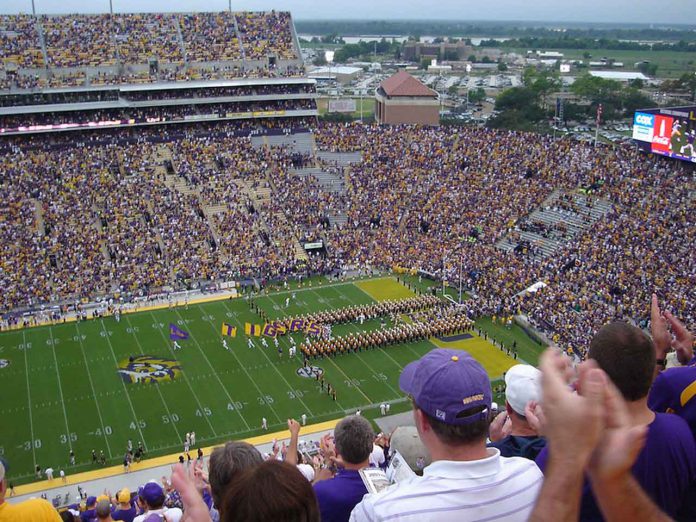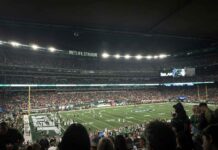Football holds a special place in the hearts of Americans and Britons, shaping their sporting identities in distinct ways. In the United Kingdom, football, known as soccer globally, has been steadily gaining popularity, especially among youth and urban communities.
On the other hand, American football reigns supreme in the United States, with the NFL drawing massive viewership and fervent fan support. The contrasting preferences and viewing habits of people from these nations offer valuable insights into how cultural nuances influence the enjoyment of sports.
If you’re interested in learning more about how Americans and Britons enjoy football differently, you’re about to find out here.
1. Playing Field and Equipment
When it comes to the playing field, American football fields and soccer pitches stand apart in size and layout. If you’re following pro leagues like the NFL or FanDuel college football in the USA, alongside soccer leagues in the UK, you’ll notice the differences in playing field dimensions and equipment used in this sport.
American football fields are rectangular and marked with yard lines for precise gameplay, while soccer pitches are larger and rectangular or oval-shaped. Additionally, American football players don helmets, shoulder pads, and other protective gear due to the game’s physical nature.
In contrast, soccer players wear lightweight kits consisting of jerseys, shorts, shin guards, and cleats. The ball shape also distinguishes the sports, with American football featuring an oval-shaped ball designed for throwing and kicking accuracy, while soccer employs a spherical ball for precise passing and scoring. These distinctions in field dimensions and equipment contribute to the unique gameplay experiences and strategies in American football and soccer.
2. Rules and Gameplay
Each sport offers a unique set of regulations and strategies, from the scoring systems to gameplay dynamics. American football divides the game into four quarters with stoppages, emphasizing strategic plays and intense moments.
Conversely, British football, known for its continuous play, operates in halves with added time for stoppages. The number of players on the field also differs, with American football fielding 11 players per team compared to soccer’s 11-a-side setup. These distinctions shed light on the tactical nuances and skill sets required in each sport, enriching the viewing experience for fans and enthusiasts alike.
3. Cultural Significance and Fan Engagement
The cultural significance of football in America and Britain transcends mere sport, intertwining with traditions, rituals, and societal norms. In America, football serves as a unifying force, bringing communities together in spirited support of their teams, especially during major events like the Super Bowl. On the other hand, in Britain, football is deeply ingrained in the national identity, with matches serving as social gatherings that foster camaraderie among fans.
The fan engagement levels in both countries vary, with American football showcasing elaborate tailgating parties and halftime shows. In contrast, British football enthusiasts display unwavering loyalty through chants and cheers that reverberate throughout stadiums.
4. Professional Leagues and Global Impact
The peak of American football is the National Football League (NFL), known for its high-stakes games, renowned teams, and iconic Super Bowl championships. In contrast, British football shines through the prestigious Premier League, home to top clubs like Manchester United, Liverpool, and Chelsea, captivating audiences with unparalleled skill and drama.
While the NFL boasts a massive following within the United States, the Premier League’s global reach transcends borders, captivating millions of fans worldwide. The NFL’s international fan base continues to grow through initiatives like international games, but the Premier League’s established presence on a global scale remains unmatched.
Commercially, both leagues command lucrative deals and sponsorships, with the Premier League dominating in terms of broadcast revenue and brand partnerships due to its widespread popularity and competitive nature. The impact of these professional leagues extends far beyond the playing field, influencing culture, economy, and the hearts of fans across continents.
5. Player Development and Talent Pathways
When it comes to player development and talent pathways, American and British football offers distinct routes for aspiring athletes to hone their skills and pursue professional careers. In the United States, youth development is emphasized through organized leagues, school programs, and grassroots initiatives that nurture young talent from an early age. The collegiate system plays a crucial role in player advancement, with top college athletes often transitioning to the NFL through the draft process.
Conversely, British football relies heavily on academy systems within clubs, where talented youngsters are scouted and trained within a club’s youth setup. The pathway to professionalism in the UK often involves progressing through various youth levels within a club before potentially making first-team appearances.
While both countries prioritize player development, the structures and pathways differ, with the US focusing on collegiate opportunities and the UK emphasizing academy systems as primary talent incubators.
Takeaway
American and British football showcase unique gameplay, fan engagement, and player development characteristics. Despite these differences, the shared passion for football transcends cultural boundaries, uniting fans worldwide in a common love for the beautiful game. The diversity in approaches to the sport only enriches the global culture of football, celebrating its universal appeal.






